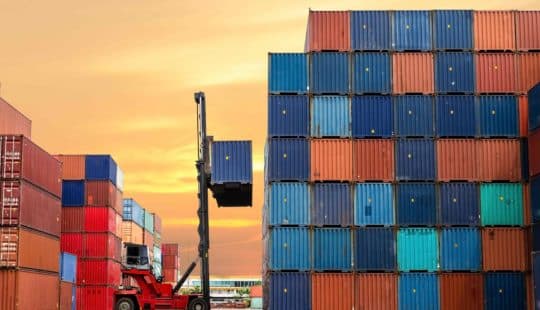Why is a sustainable supply chain important to companies?
While supply chains are a big part of the problem, it’s also a big part of the solution. Hence, Supply Chain Optimization is the cornerstone of Sustainability Improvement and is the biggest driver in obtaining a company’s sustainability goals.
- In 2020, CDP found that GHG emissions in a company’s supply chain are, on average, 11.4 times higher than its operational emissions.
- In 2020, 239 companies signed the Science Based target Initiative and 94 per cent of them committed to reduce emissions at customers and suppliers.
- Scope 3(indirect value chain emissions) accounts for 80 per cent of the overall climate impact for many companies. Increased globalization, competition, and continuous supply chain disruptions force companies to be more efficient and agile. In addition, companies need to match their economic objectives while operating in a sustainable manner to meet consumer needs.
Sustainable development of supply chain is a crucial part of any business and an efficient supply chain is imperative.
Sustainability starts with product design, which feeds into the manufacturing and supply chain processes. The supply chain involves the movement of materials and services from upstream to downstream operations of the Supply chain. Today’s supply chain consists of multiple operations, suppliers across locations, and facilities in different countries, regions, or parts of the world.
A digitalised resilient supply chain helps companies:
- To be more agile (Proactively and profitably sense and respond to market dynamics)
- Increase Productivity (Deliver high-quality, mass-produced, make-to-order products faster)
- Improve connectivity with Business partners
- Run sustainable business practices that maximize reuse and minimize waste of materials from design to operate, minimize carbon footprint across the supply chain network, and protect the health and safety of employees
As we are aware, sustainable sourcing is critical across all industries. It is the process of selecting materials, products, and services from suppliers sustainably. As supply chains continue to expand globally into developing countries, seeking lower costs and greater production capacity, they expose companies to an even wider array of risks. In applying sustainable sourcing, organizations integrate social, ethical, and environmental factors into selecting their suppliers.
Hence, managing the social, environmental, and economic impact of the supply chain is a key priority for companies to achieve long-term success. Not only does this help to comply with sustainability legislation and environmental regulations, but the sustainability of the supply chain can also affect the business’s profitability, work opportunities, professional partnership, and reputation. It is crucial for companies to collaborate within their own departments and suppliers across their supply chain network to reduce the scope emissions.
How Does Supply Chain Optimization Help Companies on Their Sustainability Journey?
In today’s supply chain, goods might travel halfway around the world before reaching their final destination, which have a large impact on company’s carbon footprint. Hence, the collaborative supply chain planning and execution are at the heart of companies’ brand and business success and help companies on their environmental goal.
Let’s now look at the three areas which help companies in optimizing their supply chain activities and help in reducing indirect emissions that occur in the value chain.
Supply Chain Planning
Supply Chain Planning is the intelligent brain to optimize the supply chain to improve the sustainability goal of the companies. This helps companies to plan resources, inventories, capacities, and ethical sourcing. This is helping companies in reducing overall environmental impact and product wastages across the supply chain.
In many organizations today, the planning team is isolated from the rest of the value-generating teams and plans product demand in siloes. Here are the details on how collaborative and synchronized Supply Chain planning can help companies in reaching their sustainability goal sooner:
- Sustainable supply helps the planner in ethical sourcing across your entire supply chain and better collaborate with suppliers on the sustainability sourcing targets
- Increased forecast accuracy helps to carry optimized inventory across the supply network and also helps to reduce product wastage
- Use sustainability targets and planetary boundaries as capacity constraints
- Resource Optimization helps to optimize equipment and resource usage. This practice allows companies further optimize energy and emissions from the equipment.
Supply Chain Execution
It has been reported that emissions from logistics businesses during the delivery of goods have been upward trajectory, increasing by 1.9% annually since 2000.Most of this can be attributed to the rise of globalisation and increased demand for consumer goods. Transportation is one of the areas in which getting to zero emissions is a key goal for companies which includes reducing travel distances and increasing efficiency. Here are the details on how optimised transportation and warehouse processes helps companies to ensure the logistics processes are managed sustainably by saving resources and protective the environment.
- Transport optimisation: Optimize loads and reduce mileage across operations, making such deliveries more sustainable, end to end – from raw materials to factory, to the warehouse to doorstep. This helps companies in reducing emissions and costs and improves utilization.
- Warehouse planning to optimize the storage and warehouse activities
- Energy optimization: Use CO2- and energy-optimized warehousing and transportation.
- Worker safety: Develop a process to ensure workers’ safety and that only qualified personnel can handle dangerous goods.
Collaborative Logistics Network
Logistics is complex. It manages the movement of raw materials, intermediate products, and packaging across the globe to manufacturing facilities, as well as the distribution of products from origin to consumption.
Today’s sustainable enterprises want more profound insights into their supply chains, including the sustainability values of their trading partners. Companies want trading partners’ sustainability values to align with their and consumers’ values. SAP Business Network, along with our ecosystem of partner applications, creates the transparency needed to make decisions based on a range of criteria. When the performance of existing trading partners doesn’t align with a business’ sustainability goals, shifting to new trading partners has never been easier. With Today’s Collaborative logistics Network, companies can quickly discover new, more sustainable providers across industries and geographies.
A digitalised logistics network helps companies with the following:
- Collaboration for Responsible Sourcing and Purchasing
- Material traceability reinforces sustainability throughout the supply chain to create a trusted network across material flows.
- Collaborative Asset Intelligence Network helps in energy waste reduction
- Efficiently plan and execute delivery
How Can SAP Help
SAP’s supply chain management solution helps companies adopt sustainable practices from the product design stage. The solution helps to capture sustainability data across every stage of the supply chain to align with regulatory and corporate sustainability goals while balancing profitability by optimizing supply chain activities across the network.
- Design recyclable and sustainable products with a minimal carbon footprint, planet-friendly packaging, and a responsible end of life
- Plan to reduce emissions, source materials ethically, and support circular processes
- Manufacture with minimal waste and environmental impact by monitoring energy use based on production volume
- Deliver products and optimize logistics to support product traceability and decrease miles driven, carbon footprint, and energy use
SAP Business Network enables you to collaborate with all trading partners in your supply chain, including suppliers, logistics and services providers, asset operators, maintenance contractors, and more.
SAP Business Network for Supply Chain helps you to achieve supply chain visibility by enabling plan-driven automation, optimising capacity and inventory, and streamlining procurement workflows to build resiliency in your supply chains.
SAP Business Network for Logistics helps companies to improve freight collaboration, goods tracking across the network, material traceability, and supply chain resilience.
- Freight logistics collaboration support shippers in their collaboration with third-party logistics providers.
- Tracking and Tracing solution enables real-time insights into the movement of materials and products to reduce supply chain risks and optimize costs.
- Material traceability helps to Improve transparency, trust, efficiency, and sustainability by connecting your supply chain.
SAP Business Network for Asset Management empowers asset owners, operators, or service providers to better collaborate and share information through a single, consistent version of asset master data to streamline asset servicing processes and reduce maintenance costs.
How to Begin the Journey
- Start Transformation: Gain insight by aligning people, processes, and technology to holistically manage sustainability aspects across your enterprise and the supply chain.
- Get a baseline and identify the hot spots for improvement: Assess how you perform – environmental, social, and governance impact.
- Focus: Set the overall direction of where you want your company to go. Identify impact areas, and define targets, milestones, and timelines.
- Sustainability Performance: Monitor, measure, analyse and report on improvements around sustainability performance.




